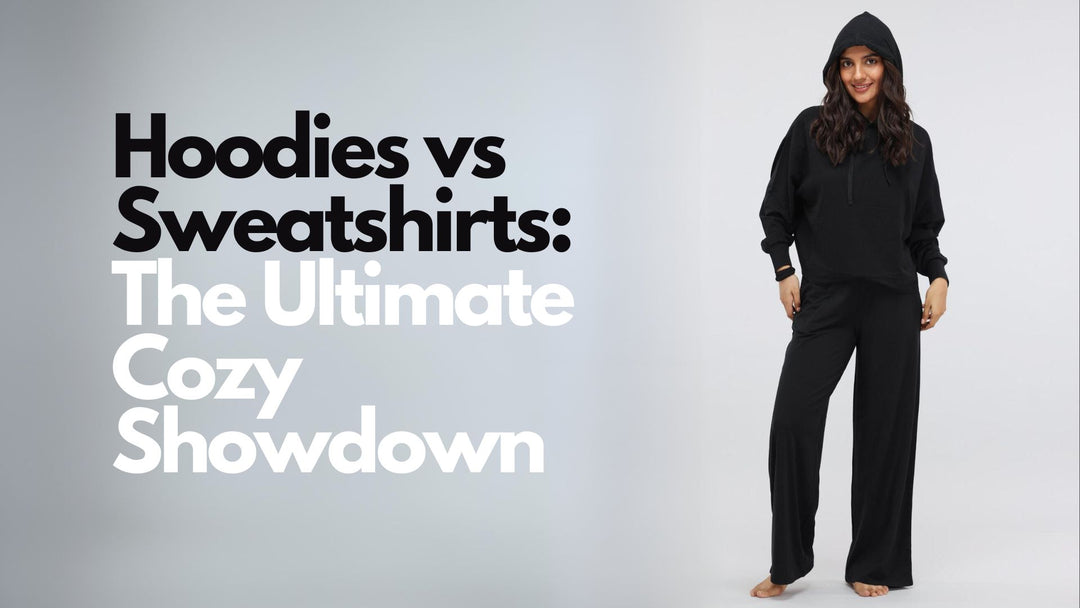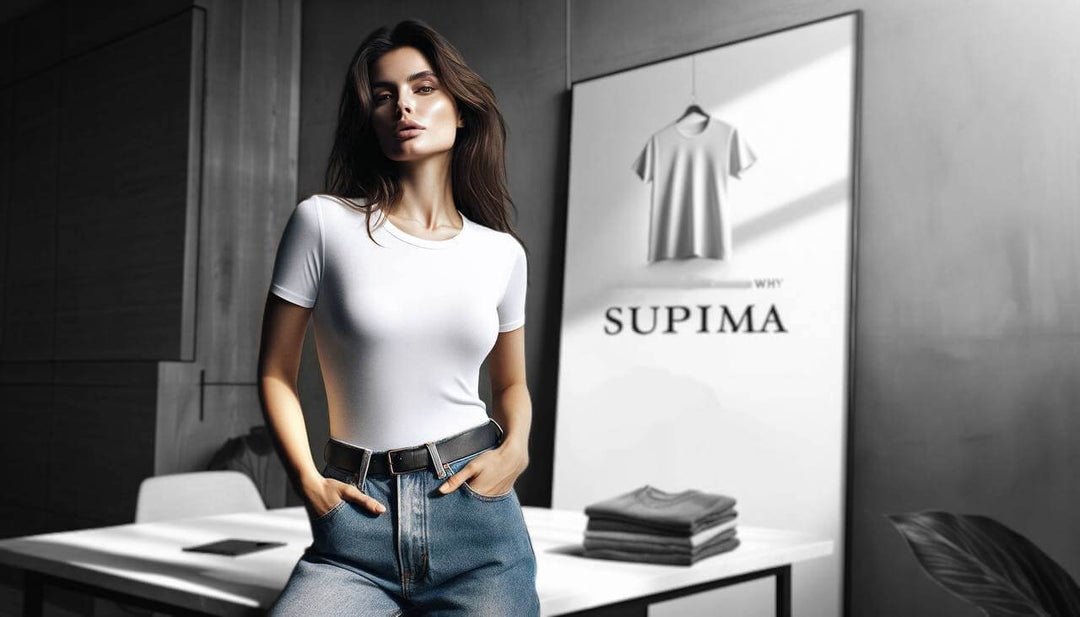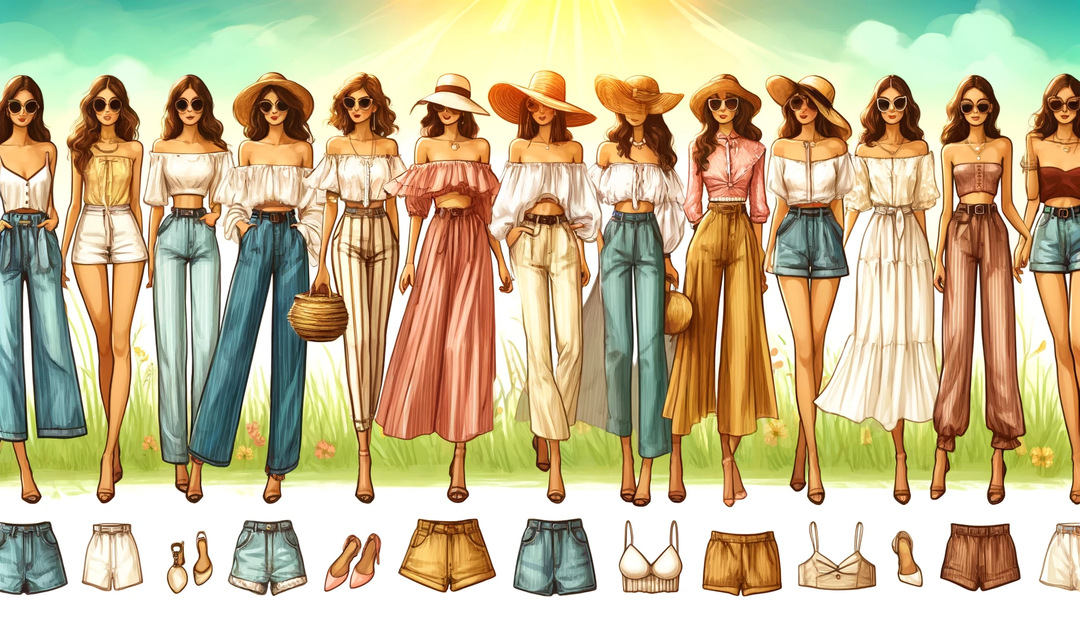You're deep into a Netflix marathon, hair in a bun, snacks on standby, living your best cozy life. But wait... something feels off. Your loungewear? Not quite giving the "wrapped-in-a-cloud" energy you deserve. Suddenly, you’re on a mission, scrolling through websites, jumping between fabric tags, and bam! You land on the two frontrunners in the comfort Olympics: Supima Cotton vs. Bamboo Fabric.
It’s like the fabric version of a red carpet showdown, Zendaya in Valentino vs. Rihanna in Fenty, both iconic, but only one gets your vote. Supima is all about luxe softness and long-lasting quality, while bamboo is the cool, eco-conscious contender promising breathability and silky smooth feels.
Let’s be honest, we’ve all paused mid-scroll thinking, “Which one is actually better?” Is it about softness? Sustainability? Durability? Or just that feel-good magic when you slip into something that gets you?
Ready? Grab that coffee. Or wine. No judgment here.
Supima Cotton (It's Not Just Fancy Cotton)
Before we jump into comparisons, let's talk about what makes Supima cotton the luxury fabric it's known to be. Supima cotton isn’t merely fabric, it’s a declaration. Crafted from extra-long staple fibers, each measuring a romp of 1.5 inches, Supima stands as the pinnacle of quality.
-
These fibers, 35% longer than those of conventional cotton, create a yarn that whispers luxury with every thread.
-
With a tensile strength up to 45% greater than ordinary cotton, Supima is the embodiment of durability.
-
Unlike many fabrics that wither under the weight of countless washes, Supima softens with time, growing lovelier, almost sentient in its comfort.
Think of Supima like the silk of the cotton world – it's that special! When you slip into a NeceSera Supima cotton dress or co-ord set, you're experiencing fabric engineering at its finest.
Bamboo Fabric (Nature's Fastest-Growing Wonder)
A fabric with a twist as unpredictable as a plot in your favorite drama series. Bamboo, that wondrous green marvel that can shoot up 1.5 inches per hour, harbors secrets that can transform a humble plant into an extravagant textile.
-
Silken Transformation: Through processes that range from eco-friendly mechanical treatment to more chemical-laden routes, bamboo emerges as a fabric with an ethereal, silky feel that some liken to liquid velvet.
-
Textural Magic: The bamboo fabric texture, a delicate dance between natural fiber and high-end transformation, offers an almost surreal softness right out of the package, promising an experience that is both luxurious and refreshingly cool.
Intriguing isn’t it? Bamboo fabric isn’t just about looking good; it’s a narrative of innovation, environmental promise, and yes, a touch of controversy that makes every piece conversation-worthy.
Supima Cotton Softness Comparison
When it comes to the Supima cotton softness comparison, this fabric delivers an unmatched luxury experience. The extra-long fibers create a smoother surface with fewer exposed fiber ends, resulting in a fabric that feels incredibly soft against your skin.
What's remarkable about Supima is its ability to maintain and even improve its softness over time. Unlike regular cotton that can become rough or pill after multiple washes, Supima actually becomes softer and more comfortable with each laundering cycle.
Bamboo Fabric Texture
The bamboo fabric texture is often described as having a silky feel that rivals expensive silk sheets. The rounded structure of bamboo fibers creates a smooth surface that glides against your skin, making it a popular choice for those seeking ultimate comfort.
Bamboo fabric offers:
-
A naturally lustrous appearance
-
Smooth, almost slippery texture
-
Lightweight feel
-
Natural drape similar to silk
Which Fabric is Softer: Supima or Bamboo?
So, which fabric is softer Supima or bamboo? This is where personal preference plays a huge role. Both fabrics offer exceptional softness, but in different ways:
Supima Cotton:
-
Offers a crisp, clean softness
-
Feels substantial and luxurious
-
Improves with age
-
Perfect for those who prefer a cotton feel with premium softness
Bamboo Fabric:
-
Provides a silky, almost slippery softness
-
Feels lighter and more fluid
-
Maintains consistent texture
-
Ideal for those who love the feel of silk or satin
For the comfort level Supima vs bamboo clothing, both excel but cater to different preferences. Think of it this way: Supima is like a warm hug, while bamboo is like a gentle caress.
Breathability Bonanza (Comfort for Sensitive Skin)
In the realm of fabrics, breathability isn’t just a feature, it’s a lifeline, especially for those with delicate or sensitive skin.
-
Bamboo’s Cool Confidence: With innate moisture-wicking properties and an almost enviable ability to regulate temperature, bamboo transforms sweaty moments into cool respite.
-
Supima’s Gentle Whisper: Supima cotton, celebrated for its natural fiber structure, boasts excellent air circulation and hypoallergenic qualities that pamper even the most sensitive skin.
Imagine a warm summer night where the fabric’s breathability turns a restless slumber into a luxurious reverie. Whether it’s the vibrant energy of bamboo or the steady, reassuring ease of Supima, comfort is redefined with every exhale.
Which Fabric Withstands the Ages?
Let’s face it: you don’t just want softness; you need resilience that survives the chaos of daily life.
-
Supima Cotton’s Endurance: Proven to be 45% stronger than regular cotton, Supima laughs in the face of pilling and wear. It remains robust, its beauty unyielded by countless washes, a trusted companion for pajama sets, T-shirts, and timeless loungewear alike.
-
Bamboo Fabric’s Balancing Act: Bamboo, while initially charming, can sometimes stumble in the endurance race. Its susceptibility to pilling and gradual thinning under rigorous use means that, though lovely, it might demand more delicate handling.
|
Durability Factor |
Supima Cotton |
Bamboo Fabric |
|
Tensile Strength |
45% stronger than regular cotton |
Moderate strength |
|
Pilling Resistance |
Exceptional |
Varies with care |
|
Wash Endurance |
Grows softer, remains robust |
May degrade over time |
|
Longevity |
Multi-year charm |
Tends to shorten with heavy use |
Greener Pastures or Chemical Quagmires? (Sustainability Conflict)
In an era where every purchase weighs on our planet’s future, the sustainability of our fabrics is paramount. Let’s unspool this eco-tale:
Bamboo’s Dual Identity: On one side, bamboo is heralded as a miracle—a fast-growing, water-frugal wonder that naturally regenerates. But look closer, and you discover that much of its transformation involves chemical processing that could tarnish its eco-friendly reputation.
Supima Cotton’s Eco-Ethos: Supima, grown under rigorous American standards, offers a blend of sustainability and longevity. Yes, cotton demands more water, yet its durability means fewer replacements and ultimately, a lower environmental burden.
Is Bamboo Fabric Eco-Friendly?
The bamboo story is complex
-
Pros:
-
Grows incredibly fast without pesticides
-
Requires minimal water
-
Naturally regenerates from roots
-
Cons:
-
Chemical-intensive processing (often using harsh solvents)
-
Not all bamboo fabric is created equal
-
Transportation footprint can be significant
Supima Cotton Sustainability
Supima's environmental profile:
-
Pros:
-
Grown with advanced farming techniques
-
Longer-lasting means less frequent replacement
-
Biodegradable and compostable
-
Cons:
-
Requires more water than bamboo cultivation
-
Limited to specific growing regions
The eco-friendly debate is nuanced. For environmentally conscious shoppers, it’s a matter of aligning personal values with responsible sourcing. Both fabrics have their green merits and environmental compromises, making the choice deeply personal.
How to Wash Bamboo Fabric vs Supima Cotton Care Tips
Nothing ruins a favorite outfit faster than improper care. Here's your guide to keeping both fabrics in pristine condition:
Bamboo Fabric Care Guide
-
Wash in cold water (30°C or below)
-
Use gentle, eco-friendly detergents
-
Avoid fabric softeners (bamboo is naturally soft!)
-
Air dry when possible
-
Iron on low heat if needed
Supima Cotton Maintenance
-
Can handle warmer water (up to 40°C)
-
Machine washable and dryer-friendly
-
Gets softer with each wash
-
Minimal ironing required
-
More forgiving with different detergents
Fabric Shrinkage Comparison: Bamboo tends to shrink more (up to 5-7%) compared to Supima cotton (1-3%), making pre-washing important for bamboo garments.
The Best Fabric for Daily Wear
When it comes to the fabric that keeps pace with your daily adventures, be it energetic mornings, long commutes, or cozy nights, choosing the ideal material is non-negotiable.
-
Team Bamboo appeals to those who revel in an immediate splash of silky luxury. It’s perfect for pieces requiring that fresh, cool sensation, ideal for active lifestyles and steamy summer days.
-
Team Supima champions the enduring elegance of everyday comfort. Its robust durability and gradual softening make it the reliable workhorse for long-lasting, wearable art like T-shirts, pajama sets, and staple loungewear.
Conclusion
Whether you're drawn to the lasting luxury of Supima or the silky softness of bamboo, we've carefully curated our collection to offer you the best of both worlds.
Ready to experience the difference quality fabrics make? Browse our collection of pajama sets, loungewear, and everyday essentials crafted from premium Supima and bamboo fabrics.
Shop Now and discover which fabric becomes your new favorite – because when it comes to comfort, you deserve nothing but the best.
FAQs
Q1. Is Supima cotton better than bamboo?
It depends on what you value most, Supima cotton offers remarkable durability, evolving softness with each wash, and superior resistance to pilling, while bamboo presents an instant, luxurious silky feel and excellent moisture-wicking properties. Choose based on whether long-term strength or immediate tactile luxury is your priority.
Q2. What is better than Supima cotton?
While Supima cotton is a benchmark for quality, some prefer organic Supima or premium combed cotton for an even more natural and sustainable appeal. Ultimately, “better” depends on your specific needs, be it eco-friendliness, softness, or ease of care.
Q3. Which is better for skin, cotton or bamboo?
Bamboo fabric is highly regarded for its natural antibacterial, hypoallergenic, and moisture-wicking qualities that suit sensitive skin exceptionally well, while high-quality cotton like Supima is also breathable and gentle. The best choice ultimately hinges on your individual skin sensitivities and care preferences.
Q4. How do I wash bamboo fabric?
Wash bamboo fabric on a gentle cycle in cold water using a mild detergent, and avoid fabric softeners to preserve its natural softness. Air drying is recommended to minimize shrinkage and extend the life of the fabric.
Q5. Is bamboo fabric eco-friendly?
Bamboo fabric is inherently sustainable due to the plant's rapid growth and low water requirements; however, its eco-friendliness depends on using mechanical processing rather than chemical methods. Always check for eco-certifications to be sure you’re choosing a truly green option.








